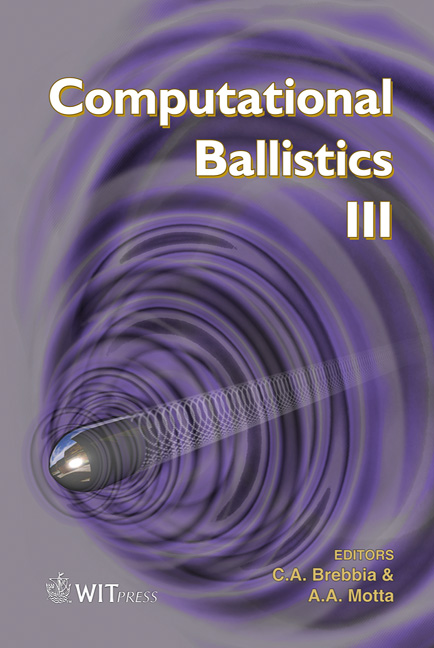Empirical Relationship For Muzzle Exit Pressure In A 155 Mm Gun Tube
Price
Free (open access)
Transaction
Volume
45
Pages
5
Published
2007
Size
654 kb
Paper DOI
10.2495/CBAL070211
Copyright
WIT Press
Author(s)
D. Carlucci & J. Vega
Abstract
The development of guided artillery projectiles has uncovered a need for the understanding of muzzle exit flows due to the common practice of designing deployable fins that open upon muzzle exit. Knowledge of this base pressure drop is also important for the electronics designer because so-called \“setforward” (the rapid \“un-springing” of the projectile as it leaves the muzzle of the gun) has been identified as the cause of many component failures. An empirical relationship is developed for the base pressure drop in a 155 mm gun tube. This tube utilized a standard double-baffle muzzle brake. Several Instrumented Ballistic Test Projectiles (IBTP) were fired at various charge zones and the base pressure drops were compared and curve fits developed. A basic exponential decay curve with averaged coefficients was developed from the data. This empirical model can be utilized by researchers performing Computational Fluid Dynamics calculations as a check on results generated for the double baffle muzzle brake configuration. Keywords: gun launch, gun hardening, muzzle exit, shot exit, electronics, MEMS, projectile dynamics, in-bore dynamics. 1 Muzzle exit behavior of projectiles With today’s focus on guided, smart projectiles, more and more designs are being developed that employ fins or other stabilization devices that are activated upon muzzle exit. This muzzle exit activation requires detailed knowledge of the pressure field to insure that these devices open uniformly and reliably.
Keywords
gun launch, gun hardening, muzzle exit, shot exit, electronics, MEMS, projectile dynamics, in-bore dynamics.




